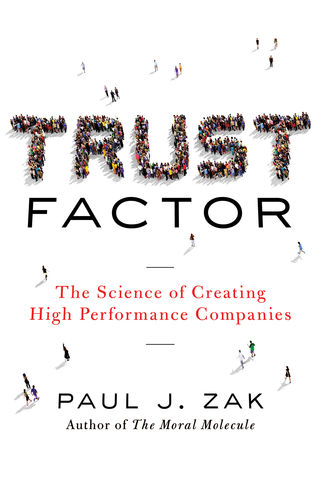Neuroscience
Neuromanagement. Really?
How Neuroscience Improves Organizational Performance
Posted March 29, 2017

The explosion in ways to measure brain activity in the last two decades, and the reduction in costs of these technologies, has resulted in neuro-hyphen-everything. And, a lot of these neuro-hyphen fields are, well, bogus.
OK, so I was one of founders of neuroeconomics, and it is not a bogus field. How do you know? Because neuroeconomists really measure brain activity in their studies and publish their findings in peer-reviewed scientific journals. Those are the criteria that I think have to be satisfied for a neuro-hyphen something to be true neuroscience subdiscipline.
So what's the deal with neuromanagement? It meets these criteria. My group spent eight years measuring brain activity while people worked to help start this field. We did this both in my laboratory, the Center for Neuroeconomics Studies, at Claremont Graduate University, and in for-profit and non-profit organizations. I just wrote a book about my findings, using what I found to create tools so leaders can manage their cultures for high performance. Full disclosure: I licensed the technology I developed to Ofactor Inc. so it could be extended and commercialized and I retain an ownership interest in the company. My group and several others are publishing neuromanagement papers in scientific journals, sharing our findings with scholars and the general public. And companies are taking notice and using our findings to improve how they run.
This is why neuroscience matters: Management is about people. My former Claremont colleague Peter Drucker called management a "liberal art" because "Managers draw upon all of the knowledges and insights of the humanities and social sciences..." True. There is definitely an art to management as anyone who has tried to organize humans will tell you. But, the advances in social neuroscience--and specifically neuromanagement experiments that have measured brain activity while people work--are producing new and actionable insights for leaders of organizations.
The whole point of collecting brain activity is to help leaders organize individuals so they can perform at their best, and to do so most efficiently. Every management fad from Six Sigma, Economic Value Added, or the Behavioral Economics of Organizations has been tried by managers and some of these improve performance and some do not. But, since resources are limited, knowing how brains work at work allows managers to get the biggest impact from policy changes on performance. That is the goal of this blog--to offer specific advice, informed by neuromanagement experiments from my lab and others--to make work better.
Here's your first take-away: My research shows that creating a human-centric workplace in which colleagues trust each other is a very effective way improve engagement, productivity, innovation, and retention. Oh yeah, I have data on all this. This is not a wild claim, it is carefully and extensively studied, with clear methodologies, using multiple measures of impact. It is real science applied to real problems in organizations. It's the dawn of neuromanagement.


